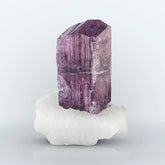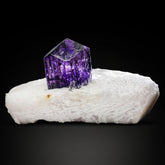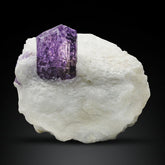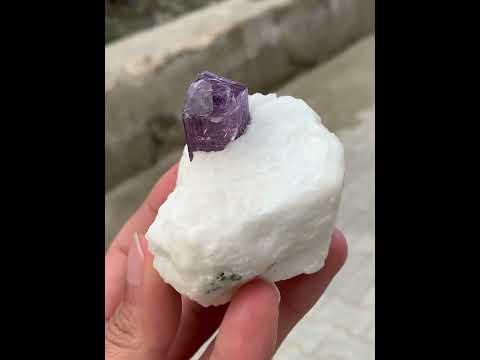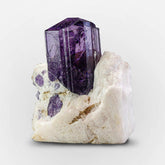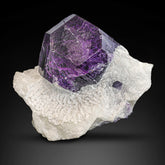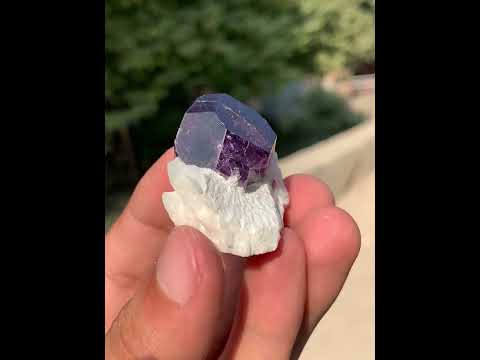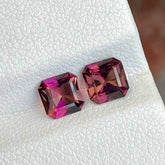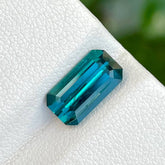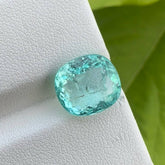-
vibrant Purple color Scapolite crystal on Calcite from Afghanistan - Purple
- $3,500.00
$1,220.00- $3,500.00
- Unit price
- per
- Purple
-
Purple Scapolite crystal on creamy white Calcite from Afghanistan - Purple
- $1,800.00
$1,220.00- $1,800.00
- Unit price
- per
- Purple
-
Purple color Scapolite crystal on creamy white Calcite from Afghanistan - Purple
- $1,500.00
$1,220.00- $1,500.00
- Unit price
- per
- Purple
-
tabular gem vibrant purple color Scapolite crystal on Calcite from Afghanistan - Purple
- $850.00
$1,220.00- $850.00
- Unit price
- per
- Purple
-
7 Grams Gemmy Scapolite var. Meionite Crystal - Light-Yellow
- $140.00
- $140.00
- Unit price
- per
- Light-Yellow
-
Vibrant Purple Scapolite on Calcite from Afghanistan - Purple
- $650.00
$220.00- $650.00
- Unit price
- per
- Purple
-
Scapolite Minerals
Scapolite Minerals
Scapolite is a group of silicate minerals that are typically found in metamorphic and igneous rocks. These minerals are members of the tectosilicate subclass of silicates, which means they have a complex crystal structure characterized by a three-dimensional framework of silica tetrahedra. Scapolite minerals have a chemical formula that varies within the group but is generally represented as (Na,Ca)4(AlSi3O12)(Cl,CO3,SO4), where Na represents sodium, Ca represents calcium, Al represents aluminum, Si represents silicon, Cl represents chlorine, CO3 represents carbonate, and SO4 represents sulfate.
Some key characteristics of scapolite minerals include:
-
Color: Scapolite minerals can vary in color, with common shades including white, gray, yellow, pink, and violet.
-
Crystal Structure: Scapolites typically form prismatic or tabular crystals with a monoclinic or tetragonal crystal structure.
-
Cleavage: They often exhibit perfect cleavage in one direction and good cleavage in another direction.
-
Hardness: Scapolite minerals have a hardness of around 5 to 6 on the Mohs scale, which makes them moderately hard.
-
Luster: They can have a vitreous to greasy luster.
-
Transparency: Scapolite minerals can be transparent to translucent.
-
Twinning: Twinning is common in scapolite crystals, which can affect their appearance and crystallography.
Scapolite minerals are commonly found in a variety of geological settings, including contact metamorphic zones, skarn deposits, and some igneous rocks. They are often associated with other minerals such as calcite, garnet, pyroxenes, and feldspars.
The name "scapolite" is derived from the Greek word "skapos," which means "shaft" or "stem," referring to the elongated prismatic crystals that are often observed in scapolite specimens.
There are several different mineral species within the scapolite group, including marialite and meionite. The specific composition of a scapolite mineral can vary based on the relative proportions of sodium (Na) and calcium (Ca) in its chemical formula. Different members of the scapolite group may have slightly different properties and colors due to these variations in composition. Scapolite minerals are also known for their gemstone varieties, which are sometimes used in jewelry when they display attractive colors and clarity.

Recently Viewed Products
- $19.99
- $19.99
- Unit price
- per
- $19.99
- $19.99
- Unit price
- per
- $19.99
- $19.99
- Unit price
- per
- $19.99
- $19.99
- Unit price
- per
- $19.99
- $19.99
- Unit price
- per
- $19.99
- $19.99
- Unit price
- per
- $19.99
- $19.99
- Unit price
- per
- $19.99
- $19.99
- Unit price
- per
- $19.99
- $19.99
- Unit price
- per
- $19.99
- $19.99
- Unit price
- per
- Choosing a selection results in a full page refresh.
